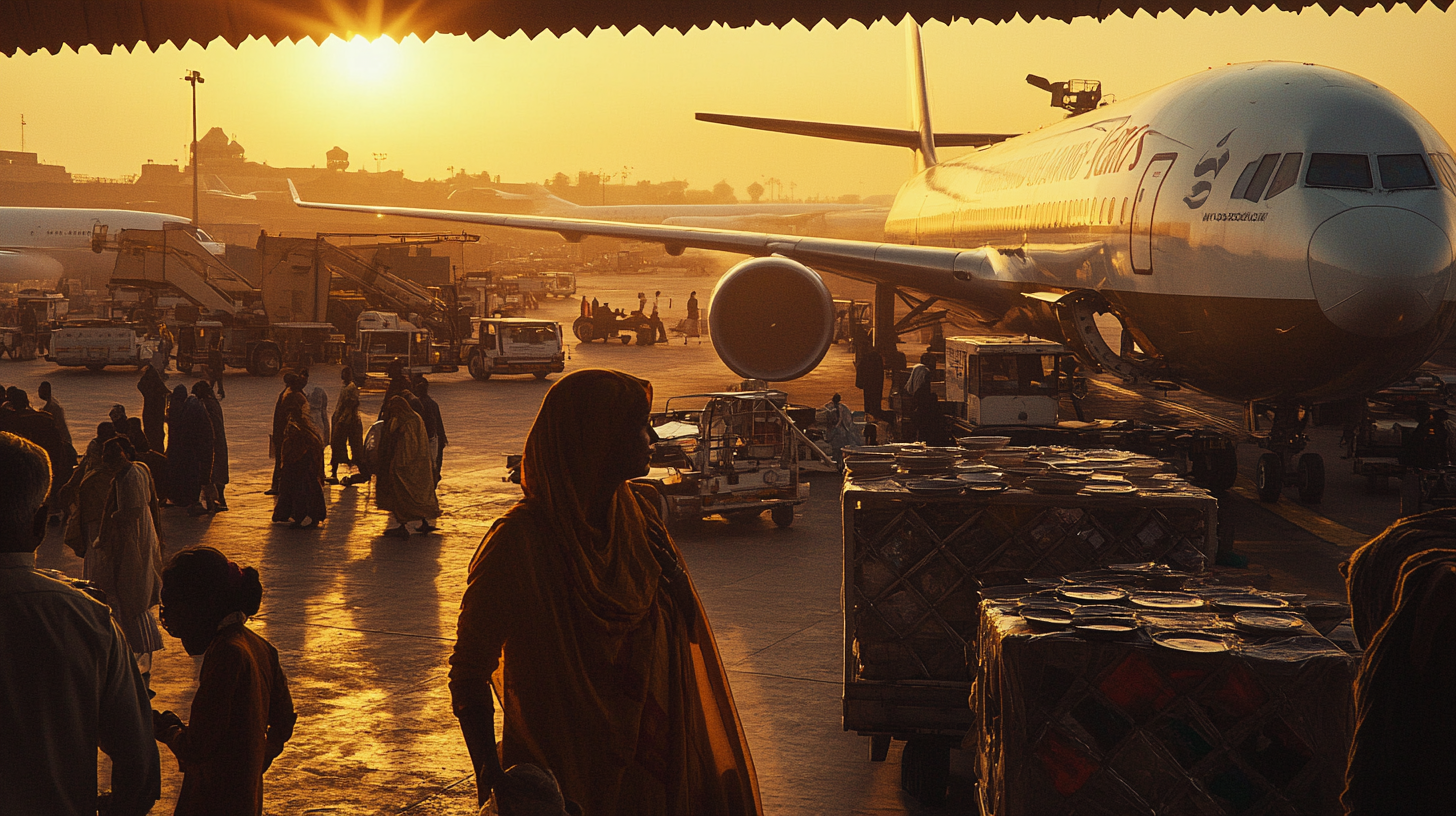Mastering Daily Business Travel Costs for the Savvy Flyer
I’ve been following the resurgence of business travel closely, particularly as we make our way through 2025. Even with more remote meeting tools at our disposal than ever before, there’s an enduring appeal to meeting in person that consistently drives teams back into airports and hotels. I’ve experienced this firsthand—the excitement of a handshake and the energy in the room can do wonders for sealing deals and forming long-term partnerships.
At the same time, it’s no secret that costs are escalating. In the United States alone, industry reports indicate that total business travel spending soared to $387 billion recently, and I’ve felt the pinch in my own expense reports. Keeping track of daily spending is the best way to avoid unpleasant surprises once the final bill arrives. By breaking down each budget category and planning ahead, I’ve discovered that it’s entirely possible to control costs without sacrificing comfort or professionalism.
1. The Daily Numbers You Should Know

According to industry data from late 2024, U.S. business travelers spent around $340 per day, edging up nearly 1% from the previous year. When I reflect on my own recent trips, these numbers resonate: a three-day domestic excursion can easily cost around $949, covering airfare, lodging, meals, and a few incidentals. On the international front, where trips usually span five to six days, you could be looking at average expenditures of about $2,600 per trip. Whether your flight is to London or Hong Kong, a slightly higher hotel rate or a bigger meal tab can push those numbers even further.
In my experience, the key is to remember that every traveler’s situation is unique, so these averages can serve as a valuable benchmark rather than an absolute rule. For instance, you might be a road warrior who racks up expenses primarily on airline tickets and rideshares, or you might be the kind of traveler who focuses on mid-range accommodations and invests more in face-to-face client dinners. Either way, if you start each day with a ballpark figure in mind, it becomes far simpler to stay in line with any caps set by your company.
Even so, many of us still underestimate how quickly those daily costs can escalate. A recent study by the Global Business Travel Association (GBTA) suggests that small fees—ranging from premium Wi-Fi charges to last-minute seat upgrades—can add an unexpected 3–5% to your daily expense total. Having that extra buffer in your calculations can help you avoid sticker shock once you’re turning in your receipts. I’ve found that the greatest skill for today’s frequent flyer is learning to plan out not just the large expenses, but the hidden ones too.
2. Breaking Down the Budget

Whenever I plan a work trip, I like to break down my budget into clear categories—flights, lodging, meals, and the often-overlooked extras. Flights typically come first, as finding a good fare can set the tone for the rest of your spending. The lodging piece can be equally significant. According to a 2023 analysis from the Global Business Travel Association, lodging alone can account for roughly 34% of total trip costs. I’ve seen colleagues navigate this by opting for slightly off-peak travel days or by being more flexible about property locations, which can sometimes result in substantial savings.
Additionally, there are the smaller aspects like insurance, visas, baggage fees, or local transportation—costs that might appear minimal on paper but can really add up in practice. I once racked up nearly $100 in just a few days by paying for premium internet services, hotel parking, and on-demand rideshares. From that experience onward, I’ve been a big believer in mapping out even the smallest fees before I take off. It might sound detail-oriented, but it helps keep my budget from spiraling out of control.
On the corporate side, organizations often have different strategies for managing expenses. Some rely on flat per diem allowances, while others use real-time dynamic budgets informed by live market data. Personally, I appreciate a balance between the two approaches: offering a fixed guideline for meals or daily incidentals, with the flexibility to respond to unexpected price spikes. Either way, transparency in corporate policies—making sure travelers know exactly what is and isn’t covered—goes a long way toward preventing surprise costs like rushed conference room bookings. I’ve seen first-hand how a well-defined expense policy can keep everyone on the same page and maintain a harmonious relationship between finance teams and traveling employees.
3. The Rise of Bleisure Travel

Bleisure—an enticing blend of business and leisure—seems to be the buzzword of the moment. I’ve noticed a growing number of my peers extending their work trips into mini-vacations, whether to explore a trendy new city or revisit an old favorite. A recent industry survey even suggested that around 30% of today’s job seekers would accept a slight pay cut if it meant more opportunities to travel for work. From my vantage point, it’s easy to see why. Combining a bit of personal downtime with business obligations can turn a routine trip into an enriching experience that doesn’t break the bank.
In my own travels, I’ve found that major hubs such as New York, London, and Geneva cater beautifully to bleisure enthusiasts. If you play your cards right, you can schedule client meetings on a Friday, then dedicate the weekend to soaking up local culture—perhaps visiting a museum, indulging in the local culinary scene, or catching a show. Of course, you’ll want to pay attention to any travel policy restrictions, making sure you’re not mixing personal activities with corporate-paid expenses. However, the potential for personal enrichment on a business trip is undeniably appealing.
On a grander scale, industry projections indicate that global business travel spending might reach nearly $2 trillion by 2028, assuming bleisure trends continue and corporate investments remain strong. I’ve seen first-hand how a single leisure day tacked onto a work trip can invigorate both the mind and soul, often improving overall productivity. As we look ahead, it’s not unreasonable to expect that more employees will request flexible itineraries. For me, this trend underscores how the lines between work and leisure continue to blur, turning business travel into a more holistic life experience than ever before.
4. Tools and Tech to Tame Costs

When it comes to keeping daily travel costs in check, I’ve found that having the right technology by your side is a game-changer. Travel and Expense (T&E) management tools—like ITILITE—are designed to track everything from flight bookings to meal allowances in real time, helping you see the precise impact of each spending decision. In fact, according to industry data I came across in 2024, companies using automated T&E platforms have reported a 15% overall reduction in expense report errors. That alone can justify the investment if you’re traveling frequently.
I remember a trip where everything that could go wrong did—from delayed flights and rerouted connections to unanticipated surge pricing for rideshares. The only thing that saved my budget was the real-time notifications sent to my phone, alerting me to cost increases and offering alternative options. Being able to pivot quickly, whether by choosing a less congested route or a nearby restaurant with more reasonable prices, can make all the difference. Without reliable tech solutions, it’s easy to overspend simply because you don’t have accurate, up-to-the-minute information.
Of course, technology is only as effective as the habits we cultivate around it. I’ve learned that consistent usage, detailed category tagging, and frequent data reviews help me spot trends—like inflated hotel prices during citywide conventions or spikes in airfare around certain events. By taking these insights into account, I can plan my next trip with better foresight. Automation and analytics can feel like buzzwords, but when you’re juggling multiple projects and time zones, having all your expense data at your fingertips can be the difference between staying within budget and coming home to an unpleasant surprise.
5. Bottom Line for the Frequent Flyer

For all the talk about virtual collaboration, in-person business travel remains a critical pillar for nurturing relationships and driving growth. I’ve seen partnerships flourish after a single face-to-face meeting that simply couldn’t reach the same level of understanding over a video call. And with daily costs fluctuating around $340—a figure that can climb much higher depending on your route—knowing how to manage each day’s spend is paramount.
Ultimately, the smart traveler isn’t the one who skimps on every meal, but the one who invests wisely and uses every resource available—be it corporate policies, expense tracking tools, or strategic travel timing. Whether I’m hiring a local guide for a few hours of cultural immersion or splurging on a direct flight to save time, my philosophy is that each expense should have a justifiable return on investment. Manage that balance well, and you’ll not only protect your corporate budget but also ensure that every trip offers genuine value to both you and your organization.
Final Thoughts

Business travel in 2025 is a multifaceted experience—one that hinges on careful planning, wise spending, and a keen awareness of how small decisions can lead to big expenses. Many of us take to the skies believing we know our own habits, only to find that costs creep up on us through incremental spend categories. By setting clear daily benchmarks, leveraging tech tools, and staying flexible in our approach, we can keep those expenses in check while still enjoying the benefits of face-to-face interactions.
As you map out your upcoming trips, remember that travel policies and budgets aren’t there to hinder you—they’re designed to help curb the unexpected costs that can derail an entire quarter’s spending. If you approach travel expenses with a sense of balance and foresight, you’ll be able to navigate business travel with confidence. After all, success in the modern corporate world often comes down to the strength of our connections, and there’s no better way to build them than by taking flight with a solid plan under your belt.
Barry B.’s Take
I’ve always been drawn to the details that others sometimes overlook—from the airline seat selection process to choosing the perfect travel app for negotiating last-minute hotel deals. My personal philosophy is that every dollar saved is another dollar that can be invested in something that truly elevates the travel experience or fosters a key business relationship.
Nothing beats the thrill of stepping off a plane in a new city and knowing you’ve got your financial game plan locked down. By staying informed, using reliable data, and embracing innovative tech solutions, frequent flyers can keep exploring the world without letting inflation, surcharges, or unexpected fees dampen the magic of being on the road.
For more tips and stories, keep an eye on milesBUZZ.







